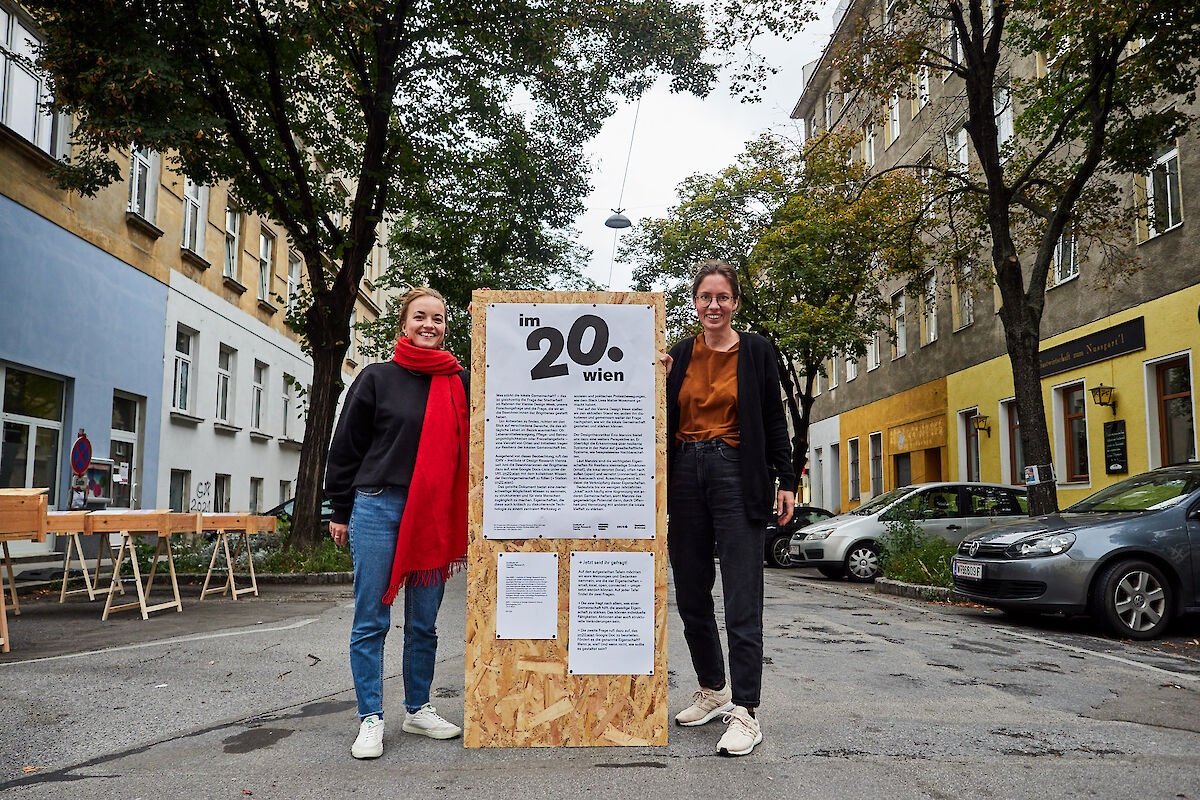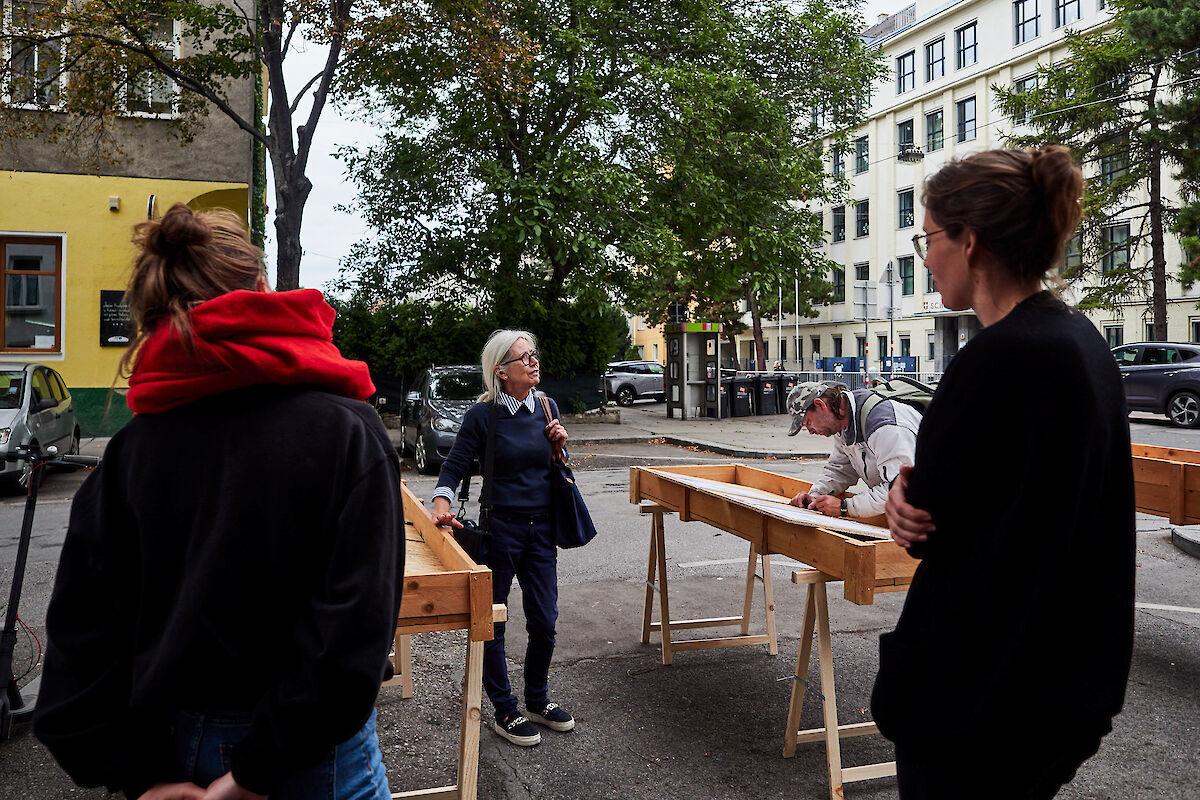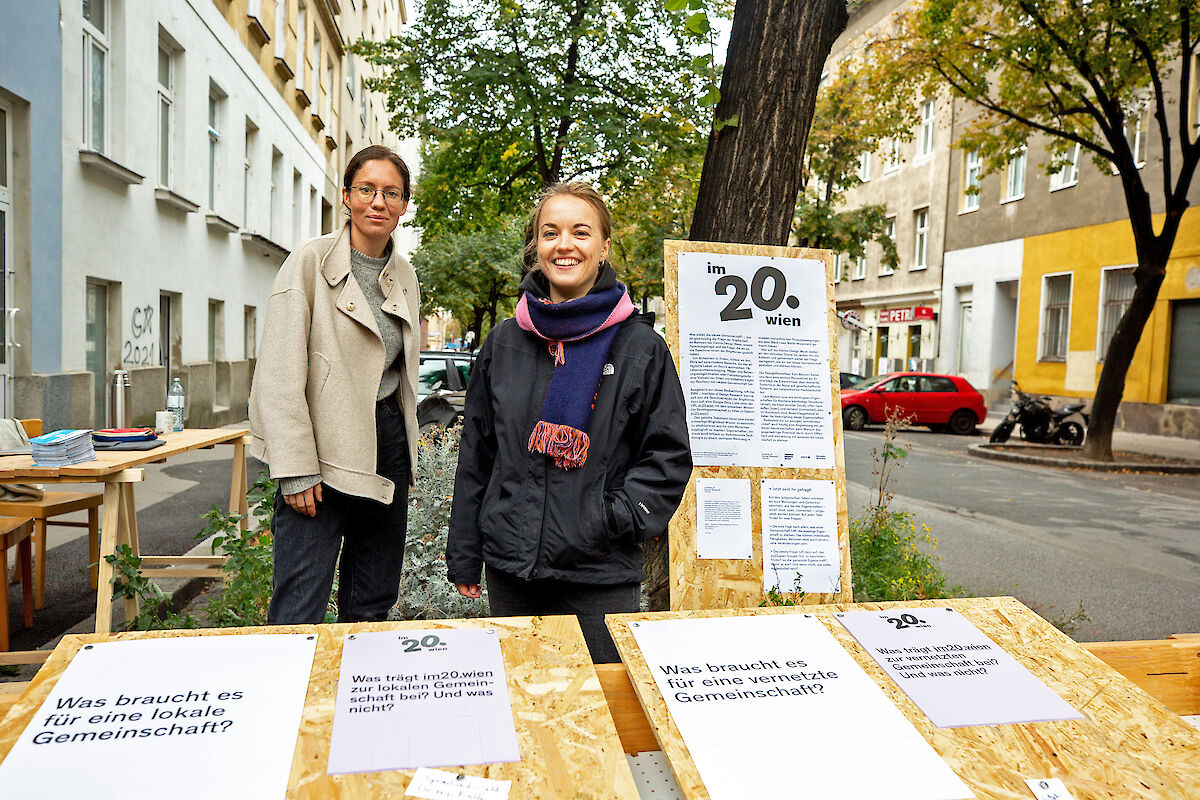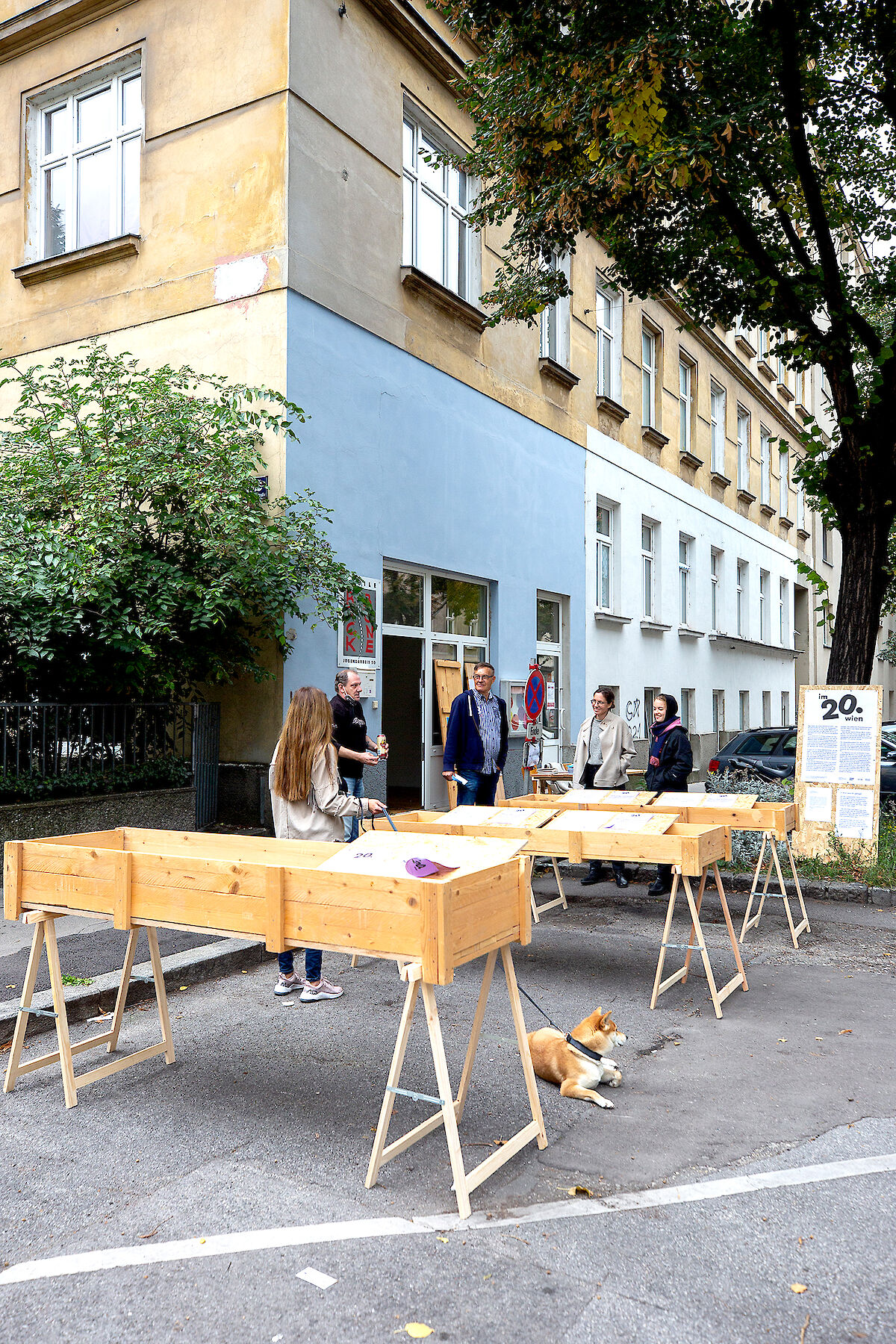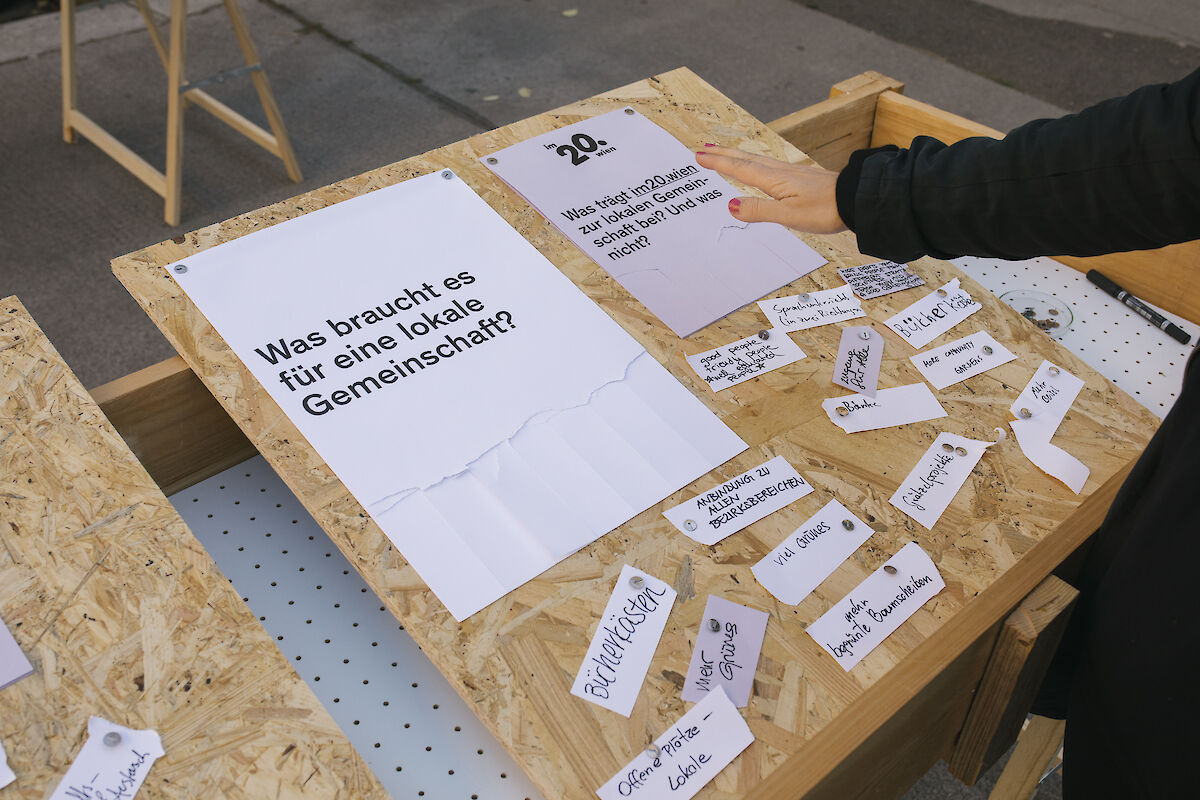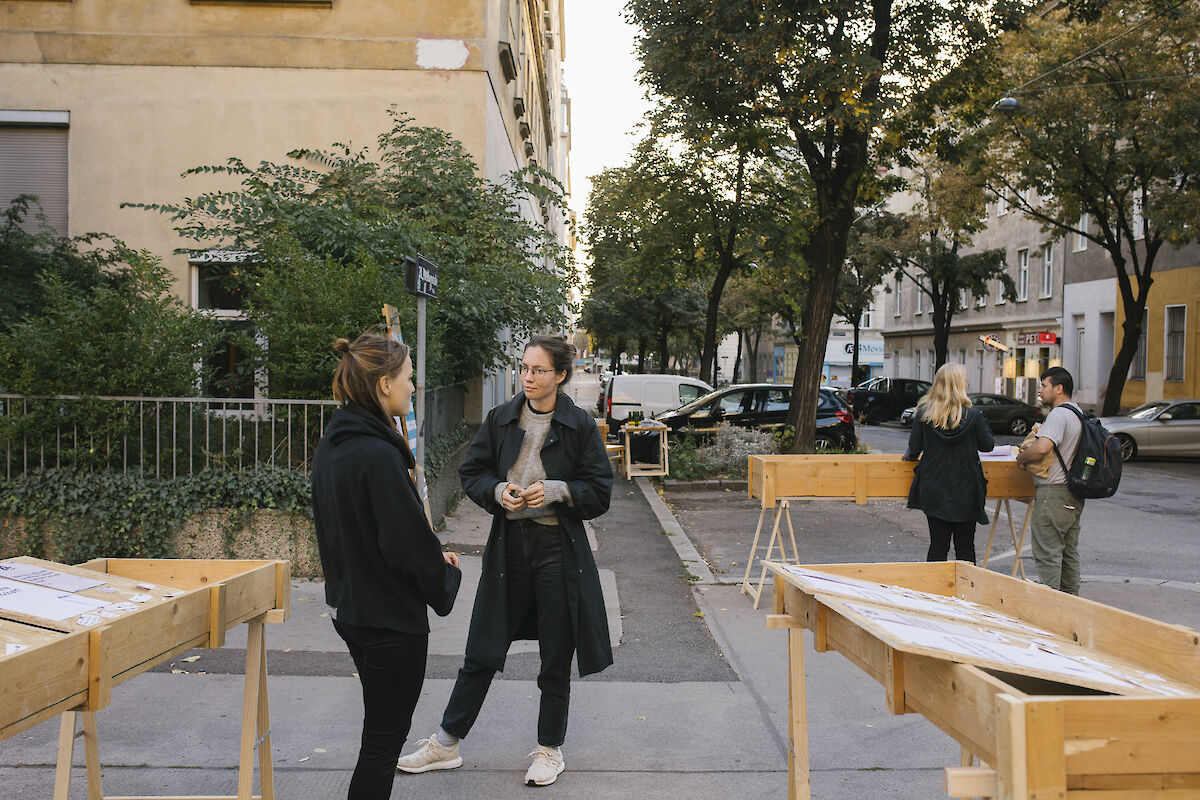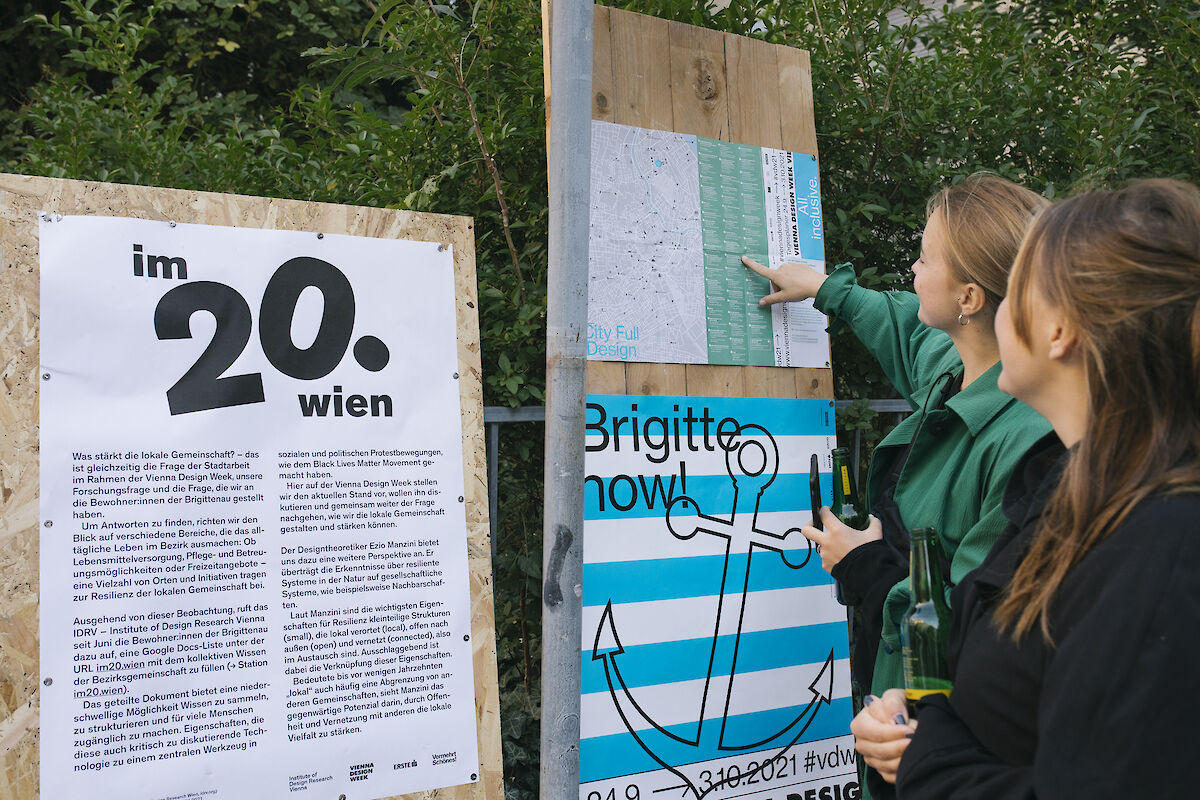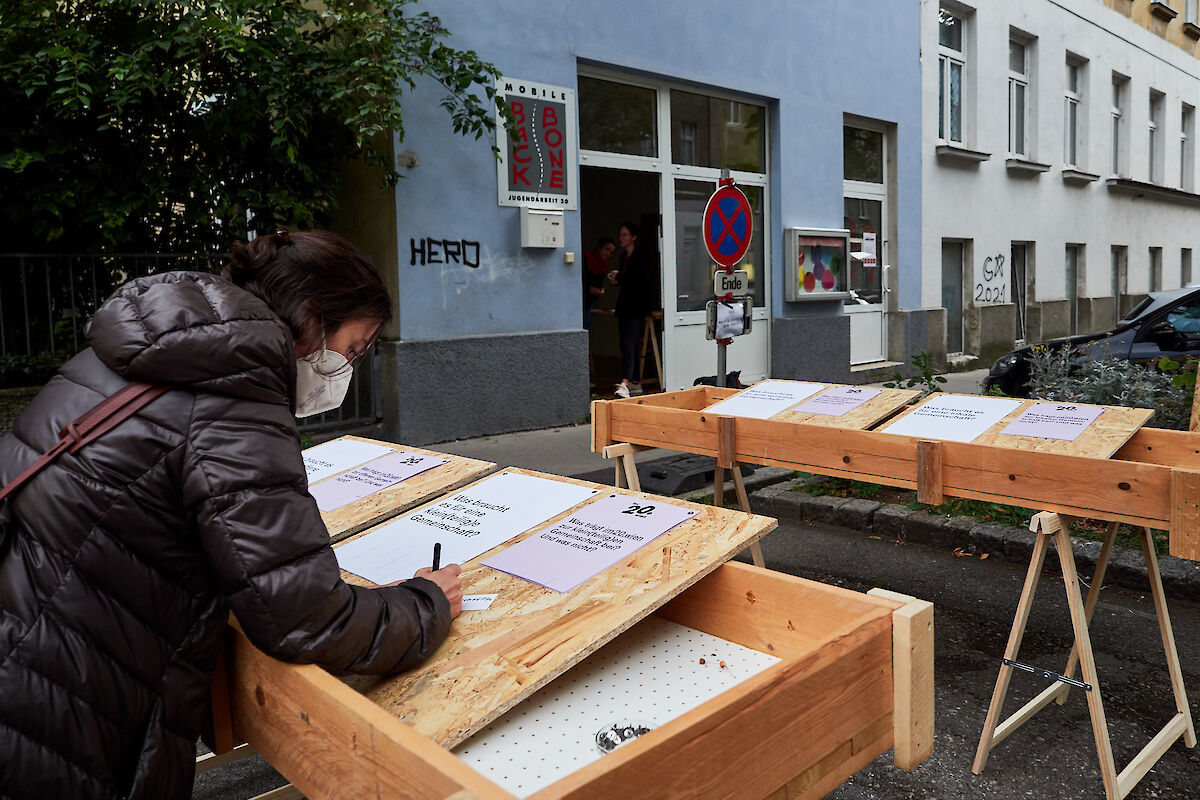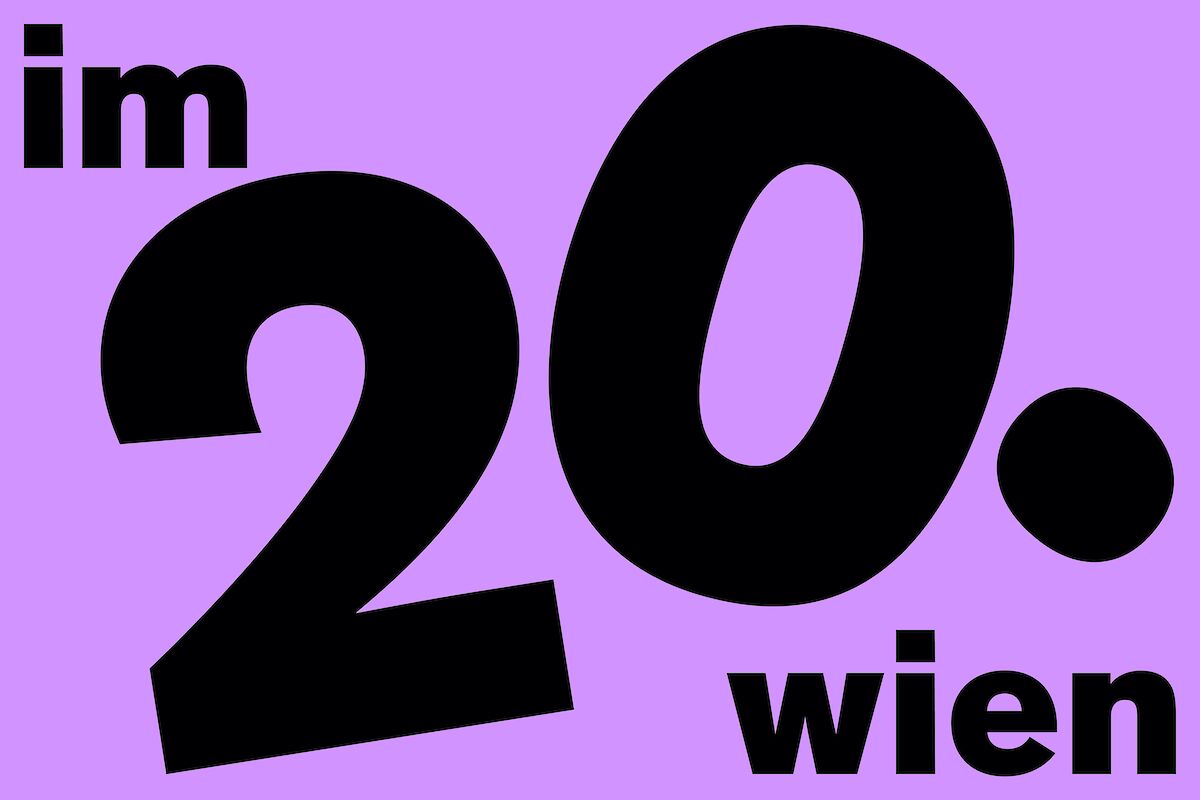Stadtarbeit – City Work
Work-in-Progress
IM20.WIEN – WAS STÄRKT DIE LOKALE GEMEINSCHAFT?
IDRV – Institute of Design Research Vienna
24.9.–3.10.2021
“The project has demonstrated the extent to which the resilience of a neighborhood is a question of organization,” commented the jury at the presentation ceremony for the Erste Bank ExtraVALUE Design Award on September 30th. In the days running up to this, the IDRV – Institute of Design Research Vienna had used the project M20.WIEN as a means of investigating how societies come together and organize themselves in physical and digital spaces. One tool employed by the participative project was a shared Google Docs list, which enabled the collective know-how of the district community to be retrieved. “With the help of technology that is easily accessible (and should also be critically discussed) and is also used by social and political (protest) movements such as the Black Lives Matter movement, the knowledge of a wide range of people can be rapidly collected, simply structured, and made available to everyone,” stated the project presentation in the festival program. The venture was a success! During the VIENNA DESIGN WEEK, the resulting pool of information about local initiatives and ideas regarding social, ecological, and economic coexistence in the 20th district achieved the desired level of visibility in the urban realm and became an object of in-situ dialog between festival visitors and the residents of Brigittenau. The jury awarded the project third prize, particularly praising its conceptual qualities: “It exemplifies how such a process can look – open, decentralized, digitally supported, equal, and participative. But the solid conceptual basis and the proposals for implementation also highlight the challenges facing new methods of integrating neighborhoods.”
